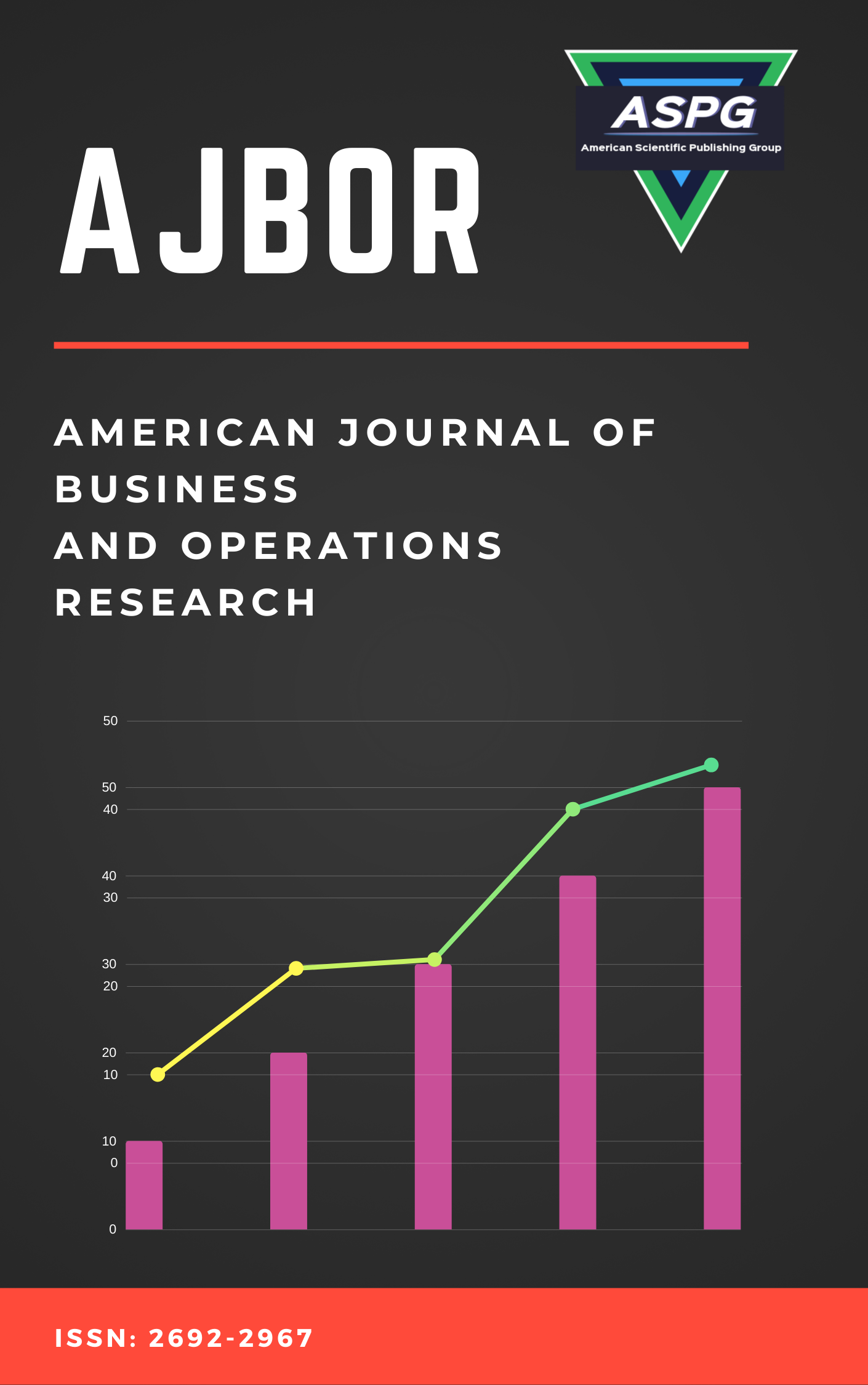

Volume 1 , Issue 1 , PP: 19-27, 2020 | Cite this article as | XML | Html | PDF | Full Length Article
K. Shankar 1 *
Doi: https://doi.org/10.54216/AJBOR.010102
The Iris based authentication framework is basically a pattern recognition strategy that utilizes iris designs, which are factually unique. In this study, an efficient iris recognition system is developed with the help of Possibilistic Fuzzy C-Means Clustering (PFCM) and Fuzzy Logic classifier (FLC). The proposed methodology consists of four modules namely, pre-processing, segmentation, normalization and recognition. Initially, in the pre-processing module, the input images are adjusted to do further processing. Then, we segment the iris region from the input image with the help of PFCM. After that, the segmented image is normalized with the help of the Daugman Robber Sheet Model (DRS). Finally, the iris image is recognized with the help of FLC. The performance of the proposed methodology is analyzed in terms of different metrics namely, accuracy, false acceptance ratio (FAR) and false rejection ratio (FRR). Experimental results demonstrate, proposed PFCM+FLC method attains a better accuracy of 97.5%
Possibilistic fuzzy c-means clustering, fuzzy logic classifier, iris recognition, segmentation, and authentication.
[1] Daugman, John. "How iris recognition works." In The essential guide to image processing, pp. 715-739. Academic Press, 2009.
[2] Daugman, John. "Statistical richness of visual phase information: update on recognizing persons by iris patterns." International Journal of computer vision 45, no. 1 (2001): 25-38.
[3] Daugman, John. "New methods in iris recognition." IEEE Transactions on Systems, Man, and Cybernetics, Part B (Cybernetics) 37, no. 5 (2007): 1167-1175.
[4] Defense Advanced Research Project , HumanID ata Distance (HumanID), 2012
[5] Seely, Richard D., Michela Goffredo, John N. Carter, and Mark S. Nixon. "View invariant gait recognition." In Handbook of remote biometrics, pp. 61-81. Springer, London, 2009.
[6] Wang, Jin, Mary She, Saeid Nahavandi, and Abbas Kouzani. "A review of vision-based gait recognition methods for human identification." In 2010 international conference on digital image computing: techniques and applications, pp. 320-327. IEEE, 2010.
[7] Ao, Meng, Dong Yi, Zhen Lei, and Stan Z. Li. "Face recognition at a distance: system issues." In Handbook of Remote Biometrics, pp. 155-167. Springer, London, 2009.
[8] Huang, Gary B., Marwan Mattar, Tamara Berg, and Eric Learned-Miller. "Labeled faces in the wild: A database forstudying face recognition in unconstrained environments." 2008.
[9] Fancourt, Craig, Luca Bogoni, Keith Hanna, Yanlin Guo, Richard Wildes, Naomi Takahashi, and Uday Jain. "Iris recognition at a distance." In International Conference on Audio-and Video-Based Biometric Person Authentication, pp. 1-13. Springer, Berlin, Heidelberg, 2005.
[10] Bashir, Faisal, David Usher, Pablo Casaverde, and Marc Friedman. "Video surveillance for biometrics: long-range multi-biometric system." In 2008 IEEE Fifth International Conference on Advanced Video and Signal Based Surveillance, pp. 175-182. IEEE, 2008.
[11] Venugopalan, Shreyas, Unni Prasad, Khalid Harun, Kyle Neblett, Douglas Toomey, Joseph Heyman, and Marios Savvides. "Long range iris acquisition system for stationary and mobile subjects." In 2011 international joint conference on biometrics (IJCB), pp. 1-8. IEEE, 2011.
[12] Mamdouhi, Mina, Manouchehr Kazemi, and Alireza Amoabedini. "A New Model for Iris Recognition by Using Artificial Neural Networks." In Fundamental Research in Electrical Engineering, pp. 185-196. Springer, Singapore, 2019.
[13] Dua, Megha, Rashmi Gupta, Manju Khari, and Ruben González Crespo. "Biometric iris recognition using radial basis function neural network." Soft Computing (2019): 1-15.
[14] Subban, Ravi, N. Susitha, and Dattatreya P. Mankame. "Efficient iris recognition using Haralick features based extraction and fuzzy particle swarm optimization." Cluster Computing 21, no. 1 (2018): 79-90.
[15] Ahmadi, Neda. "Morphological-Edge Detection Approach for the Human Iris Segmentation." Journal of Soft Computing and Decision Support Systems 6, no. 4 (2019): 15-19.
[16] Ahmadi, Neda, Mehrbakhsh Nilashi, Sarminah Samad, Tarik A. Rashid, and Hossein Ahmadi. "An intelligent method for iris recognition using supervised machine learning techniques." Optics & Laser Technology 120 (2019): 105701.
[17] Sinha, Vijay Kumar, Anuj Kumar Gupta, and Manish Mahajan, "Detecting fake iris in iris bio-metric system, " Digital Investigation 25 (2018): 97-104.
[18] J.Rejinamary, S.Selvamuthukumaran, "Homogeneous Daugman’s Rubber-Sheet Model Using Otsu’s Method for Iris Recognition", Jour of Adv Research in Dynamical & Control Systems, Vol. 10, 06-Special Issue, 2018